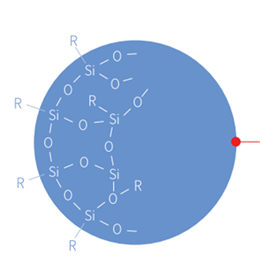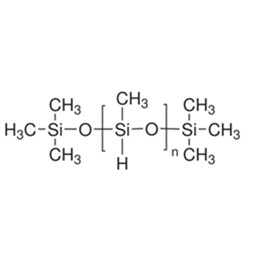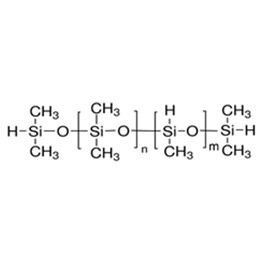High-temperature coatings are widely used and play an important role in the antioxidant protection of the external surfaces of blast furnaces, coke ovens, sintering machines, and other equipment. In addition, petroleum refining furnaces, aluminum refining furnaces, engine exhaust systems, agricultural machinery, motorcycle muffler, etc. are working at very high temperatures for a long time, high-temperature corrosion protection is necessary, need to use a high-temperature coating to protect. Silicone high-temperature coating is a major variety of high-temperature resistance, then why the market prefers silicone high-temperature coating?
Silicone coatings usually refer to dichlorosilane and trichlorosilane copolymerization made of silicone resin as the base material formulated into the coating. It has excellent oxidation resistance, UV resistance, and light retention. The outdoor durability of well-formulated silicone coatings is better than that of acrylic-MF, polyester-MF, or ammonia ester coatings, ceramic coatings, and close to that of highly fluorinated polymer coatings.
Silicone high-temperature coatings are usually made of silicone resin as the base material with various high-temperature pigment fillers, with good high-temperature resistance and chemical corrosion protection, can resist the corrosion of acids, alkalis, salts, and other chemicals, thus protecting the surface of the layer and the coated object; a certain degree of flexibility and strength, can effectively prevent the coating from cracking due to temperature changes, flaking and so on; silicone resins are also used for high-temperature resistant coatings. The base material of high-temperature resistant paint, such as aluminum powder coloring silicone resin chimney paint can be used for years at a temperature range of up to 500℃.
Here is more information about it:
- What silicone coating?
- Why choose silicone high-temperature coating?
- What is the mechanism of silicone high-temperature coatings?
- How do pigments and fillers affect the temperature resistance of coatings?
- What are the applications of silicone high-temperature coatings?
- XJY Silicone-Silicone high-temperature coatings preferred raw material supplier
1. What is silicone coating?
Silicone coating is a class of silicon atoms and oxygen atoms alternately linked to form a skeleton, different organic groups and then linked to the silicon atom polymer collectively, which is a silicone polymer or its modified polymers as the main film-forming material coatings, with excellent heat resistance, cold resistance, corona resistance, radiation resistance, water-repellent, staining resistance, corrosion resistance, electrical insulation and elasticity, and other special properties. In recent years, product modification and application have been rapidly developed.
2. Why choose silicone high-temperature coating?
2.1 What is silicone high-temperature coating?
High-temperature coatings usually refer to special functional coatings that can withstand operating temperatures above 200 ℃ for a long time, the paint film integrity does not crack, does not fall off, and still has a certain physicochemical property, so that the object is protected in the high-temperatures environment can play a normal role. (XJY-8330A methyl phenyl silicone resins are generally used in high heat-resistant coatings and other organic resins such as acrylic resins mixed-use, you can improve the coating temperature-resistant, light color retention, adhesion, corrosion, and other properties.)
The following XJY Silicone products data can be referenced:

At present, the market is the most widely used silicone high-temperature coating, with its large area construction process performance, low cost, temperature effect is remarkable, oxidation resistance, and many other advantages favored by the people, is widely used in aviation engines, high-temperature pipelines, high-temperatures furnaces, architectural curtain wall decorative and protective and other fields.
With the development of science and technology, silicone high-temperature paints are more and more widely used, and the requirements for coating performance are also higher and higher; with the gradual increase in people's awareness of environmental protection, coatings will also be towards the direction of low-pollution, green and environmentally friendly development.
The development of high-temperatures resistant modified resins and inorganic-organic composite high-temperatures resistant materials with good film-forming and construction properties, the use of nanotechnology to enhance the hardness and toughness of the coating, the development of silicone high-temperature resistant coatings in the room temperature curing of the new technology, new technologies, etc. are of great significance, will promote social development, resulting in huge economic benefits.
2.2 How to classify silicone coatings?
According to the different film-forming resins, silicone high-temperature coatings can be divided into pure silicone high-temperature coatings, modified silicone high-temperature coatings, and organic-inorganic composite high-temperature coatings.

2.2.1 Pure silicone high-temperature coatings
Pure silicone resin is usually prepared by hydrolysis condensation reaction with chlorosilane and alkoxysilanes as raw materials, by changing the number of monomer functional groups and selecting different substituents can be prepared with different degrees of polymerization, branching, and crosslinking degree of silicone resin.
The heat resistance of silicone resin with a methyl side group is better than that of silicone resin with a vinyl side group. The end hydroxyl group can assist the breakage of the silyl phenyl bond to produce benzene, make the polymer produce a branched chain, inhibit the occurrence of cyclization reaction and degradation fracture reaction, and improve the heat resistance of methyl phenyl silicone resin. However, for polydimethylsilioxane resins, the presence of terminal hydroxyl groups is harmful and will reduce the temperature resistance of silicone resins. The thermal stability of branched silicone resins is higher than that of linear silicone resins, and at lower temperatures, silicone resins with high phenyl content have better heat resistance than those with low phenyl content. It is worth noting that the structure of the silicone resin from linear or branched chain type to trapezoidal transformation can significantly improve the temperature resistance of the resin.

2.2.2 Modified silicone high-temperature coatings
Silicone resin Si-O bond polarity is easy in the electrophilic reagents or nucleophilic reagents under the attack of the molecular chain fracture, so the silicone resin on stability of chemicals and pharmaceuticals is not good, and solvent resistance performance is poor. In addition, pure silicone resin's mechanical strength, adhesion, and water resistance are not ideal, in order to overcome these shortcomings commonly used other resins for modification.
At present, the commonly used modified resins are mainly polyurethane resin, acrylic resin, epoxy resin, and so on. It must be pointed out that the above-modified resin will significantly reduce the heat resistance of silicone high-temperature coatings. In addition, due to the large difference in solubility parameters between silicone resins and other resins, simple physical blending is likely to cause poor modification and separation of the two phases, so the modification is generally carried out by chemical methods.
2.2.3 Organic-inorganic composite high-temperature coatings
Sol-gel method will be inorganic materials and silicone resin composite can generate organic-inorganic composite materials, this coating process is not only a combination of inorganic materials, high hardness, abrasion resistance, high-temperature resistance and solvent resistance, and other properties but also organic materials with good flexibility.

3. What is the mechanism of silicone high-temperature coatings?
3.1 Why silicone resin has high-temperature resistance?
The silicone resin molecular main chain contains a large number of Si-O-Si inorganic structures, the branched-chain contains a certain amount of organic groups. Compared with the carbon chain as the skeleton of organic resins, silicone resins thermal decomposition temperature is high, and good thermal stability, mainly because:
(1)Inorganic Si-O bond energy as high as 452 kJ / mol, much higher than the C-C bond (347 kJ / mol) and C-O bond (351 kJ / mol), the main chain is more stable;
(2)In the S-O bond in the relative electronegativity of the silicon atom and the oxygen atom difference number large, Si-O bond polarity has a tendency to ionization, the Si atoms connected to the side group have dipole induction effect, improve the antioxidant capacity of the side group:
(3)In the silicone resin, Si atoms, and O atoms form a d-pT bond, increasing the heat resistance of the resin;
(4)The side group of the oxidative decomposition of heat, silicone resins to form a high degree of cross-linking and more stable spatial mesh structure to prevent further breakage of the main chain. Further fracture:
(5)High-temperature oxidation of the formation of space network structure can reduce the impact of high temperature on the internal resin.
3.2 What is the process of silicone coatings under high-temperature?
Silicone high-temperature resistant coatings under a high-temperature range will undergo physical and chemical changes, which is a rather complex process, mainly including:
(1)High-temperature heat is transferred from the surface of the coating to the whole coating;
(2)As the temperature rises, the coating binder silicone resin at high temperatures will occur a thermal degradation reaction, depolymerization to form small molecular fragments and low relative molecular mass resin, small molecular fragments to absorb heat vaporization into the boundary layer, overflow from the coating; low relative molecular mass resin through chemical reactions to reassemble into a more stable skeleton structure, forming a more dense coating, further resisting high-temperature erosion.
(3)At higher temperature range, the coating is more stable;
(4)When the temperature is higher, the high-temperature pigment and filler components in the coating will also undergo physical and chemical changes; silicone resin is further decomposed, the side-chain organic groups and the main chain structure is destroyed, completely converted to inorganic siloxane structure, the formation of active centers in the fracture, and high-temperature pigment and filler interactions, which will not lead to the destruction of the heat-resistant coating, but rather can enhance the coating's Instead of destroying the heat-resistant coating, these effects can improve the coating's heat-resistant performance, and the whole coating system undergoes secondary film formation. The molecular structure of the silicone resin and the type of filler determine the type of chemical reaction and the degree of heat absorption of the coating. Physical changes that occur in the coating at high temperatures, such as evaporation, melting, reflection, sublimation, and radiation, will improve the heat resistance of the heat-resistant coating.

4. How do pigments and fillers affect the temperature resistance of coatings?
Pigment filler has an important influence on the performance of silicone high-temperature resistant coatings, adding suitable temperature-resistant pigment filler can greatly improve the comprehensive performance of the coating. Commonly used high-temperature pigments are mainly metal oxides, such as titanium dioxide, copper chrome black, cobalt blue, titanium chrome brown, etc. Fillers are mainly silicate materials, such as mica powder, talc, kaolin, silica micro powder, and so on.
In addition, in order to enhance the anticorrosive properties of the coating, antirust pigments such as aluminum powder, zinc powder, strontium yellow, zinc phosphate, etc. are often added. Pigment fillers in the grinding process and high temperature will be a chemical reaction with silicone resin, such as mica powder, talcum powder, kaolin, and other silicate filler surface with a small amount of hydroxyl, which can react with the functional group of silicone resin, metal, and its oxides can catalyze the above reaction, the formation of metal siloxane structure in the main chain, to further enhance the heat-resistant coating performance.
The thermal decomposition of silicone resin and the difference in thermal expansion coefficient between the coating and the substrate are the main reasons leading to the failure of silicone high-temperature coatings. Adding an appropriate amount of flaky aluminum powder can effectively inhibit the decomposition of silicone resin, adjust the thermal expansion coefficient of the coating, and enhance the heat-resistant performance of the coating. Flaky aluminum powder can form S-O and AI (Fe) alloy layers with steel substrate under high temperatures to improve the corrosion resistance of steel; talcum powder can improve the linear expansion coefficient of the coatings due to its large coefficient of linear expansion and small volume expansion coefficient. Improve the room temperature alternating performance of the coating and high-temperature anti-cracking performance, and can prevent the coating film from hanging, improve the water-resistance of the coating film, and abrasion resistance; conductive graphene nanoflake layer has to improve the dispersion of filler in the epoxy-modified silicone high-temperature coatings to enhance the temperature resistance of the coating performance.
5. What are the applications of silicone high-temperature coatings?
5.1 Protection of high-temperature chimneys and flues
Coal combustion, industrial furnaces and kilns, and other equipment produce high-temperature flue gas that will cause serious ablation and corrosion of chimneys and flues, silicone high-temperature coatings can form a layer of high-temperature-resistant protective layer to protect the surface of chimneys and flues.


5.2 Anti-corrosion of high-temperature pipes
Petrochemical, iron, and steel metallurgy and other fields of high-temperature pipelines need to be in contact with corrosive media for a long time, silicone high-temperature coatings can form a layer of anticorrosion under the joint action of high-temperature and corrosive media to extend the life of the pipeline.
5.3 Insulation protection of high-temperature equipment
The metal parts of electric power, aerospace, and other areas of high-temperature equipment need insulation protection, silicone high-temperature paints can form a layer of insulation to ensure the safe operation of the equipment.
5.4 Lubrication protection of high-temperature mechanical equipment
High-temperature machinery and equipment in the operation process require high-temperature-resistant lubrication materials, silicone high-temperature coatings can form a layer of high-temperature-resistant lubrication film to protect the friction of mechanical equipment.
6. XJY Silicone - Silicone high-temperature coatings preferred raw material supplier
Silicon high-temperature resistant coating is a very important high-performance coating with good high-temperature resistance and chemical resistance. It is widely used to effectively protect the surface of various high-temperature equipment and extend its service life. With the increase in high-temperature working conditions, silicone high-temperature resistant coatings will have a broader application prospect. So how to make your product stand out among them?
XJY Silicones is one of the leading manufacturers of silicone MQ resins and VMQ silicones in China, with more than 30 years of R&D and manufacturing experience in the silicone industry as well as more than 15 related patents and technical support. Our methyl phenyl silicone resins are available in customized solutions according to your application requirement specifications (high-temperature coatings/waterborne coatings, etc.)







